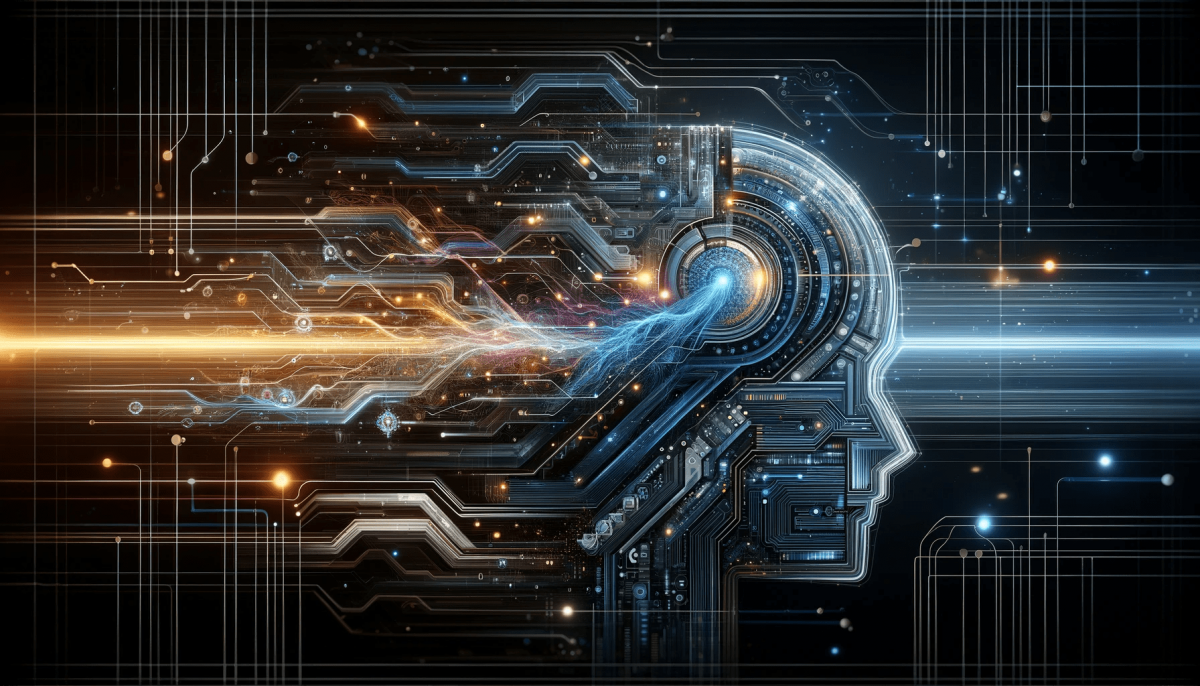The Uncharted Future of AI: Embracing the Unexpected

The Uncharted Future of AI: Embracing the Unexpected
Introduction
In the ever-evolving landscape of technology, artificial intelligence (AI) stands as a beacon of rapid advancement and boundless potential. From its humble beginnings as a theoretical concept to the creation of systems that can mimic human conversation and reasoning, AI has consistently defied expectations. This blog post aims to explore the unpredictable journey of AI development, shedding light on both its remarkable capabilities and the mysteries that still surround it.
The Evolution of AI: From Simple Algorithms to Advanced LLMs
The story of AI is one of constant evolution. In the 1950s, AI was no more than a lofty idea, a science fiction fantasy. But as decades passed, this fantasy started to take a tangible form. Early AI systems were rudimentary, based on simple algorithms and limited in functionality. Fast forward to the present, and we see the emergence of advanced Large Language Models (LLMs) like GPT-3 and GPT-4, which have revolutionized the way we interact with machines.
These models have transformed industries, from healthcare, where they assist in diagnostics, to the realm of customer service, where they power sophisticated chatbots. The journey from basic programmed algorithms to AI systems capable of learning and evolving is a testament to human ingenuity and the relentless pursuit of knowledge.
Understanding the ‘Black Box’ of AI
One of the most intriguing aspects of modern AI is its ‘black box’ nature. This term refers to the opaque internal workings of AI algorithms, particularly in the realm of neural networks, where even the developers may not fully understand how the AI arrives at a particular conclusion. This lack of transparency raises numerous questions, especially concerning the ethical implications of AI decision-making.
For instance, when an AI system makes a decision that affects human lives, such as in loan approvals or medical diagnoses, the inability to fully understand its reasoning process can lead to ethical dilemmas and accountability issues. This black box nature of AI necessitates a careful approach to its development and deployment, ensuring that these systems are not just efficient but also transparent and fair.
The Art of Prompt Engineering and AI Responsiveness
Delving deeper into the functionality of AI, particularly large language models, we encounter the fascinating world of ‘prompt engineering.’ This practice involves crafting questions or prompts in a way that guides the AI to generate the most accurate and relevant responses. The effectiveness of an AI system, in many cases, hinges on how the query is structured.
For example, asking a language model a vague question might lead to a general or off-target response. However, by refining the question, providing context, or specifying the type of information needed, the AI can produce surprisingly accurate and insightful answers. This aspect of AI highlights the nuanced interaction between human input and machine intelligence, a dance of precision and understanding.
Comparative Analysis: GPT-3 vs GPT-4 and Beyond
The transition from GPT-3 to GPT-4 marked a significant leap in AI’s capabilities. While GPT-3 impressed the world with its ability to generate human-like text, GPT-4 took this a step further, showcasing improved understanding and contextual awareness. The question now is: what does the future hold? Will the jump from GPT-4 to GPT-5, or subsequent models, bring about incremental improvements, or are we on the cusp of a breakthrough that will once again reshape our understanding of what AI can do?
Speculation abounds, but one thing is clear: the trajectory of AI development is not linear. It is punctuated by leaps and bounds that often take even the experts by surprise. The potential for AI to exceed our current expectations remains a tantalizing possibility, one that keeps both developers and users of AI technology in a state of eager anticipation.
The Unpredictability of AI Development
This unpredictability is, in many ways, the essence of AI’s development. Just as the advancements from GPT-3 to GPT-4 were not entirely predictable, the future of AI is shrouded in uncertainty. This uncertainty isn’t just about capability but also about the applications and implications of AI.
Experts in the field often debate whether the next generation of AI systems will bring incremental improvements or groundbreaking new capabilities. There’s also the possibility of unexpected failure modes, where AI behaves in ways that are not just unhelpful but potentially harmful. This unpredictability necessitates a cautious approach to AI development, one that prioritizes safety and ethical considerations alongside technological advancement.
Limitations and Challenges: Current State of AI
Despite its impressive achievements, AI today is not without its limitations. Tasks that require deep symbolic reasoning or complex problem-solving remain challenging for even the most advanced AI systems. For example, a simple Sudoku puzzle, which requires logical deduction and pattern recognition, can be more challenging for an AI than generating a page of coherent text.
These limitations highlight the areas where AI still needs to grow. They remind us that AI, for all its advancements, is not a panacea but a tool – one that is continually being sharpened and refined. Understanding these limitations is crucial for setting realistic expectations and driving focused research and development efforts.
AI and Human Cognition: A Comparison
When we compare AI with human cognition, interesting contrasts emerge. AI, particularly models like GPT-4, may have a larger ‘working memory’ than humans, allowing them to store and process vast amounts of information. However, this doesn’t necessarily translate to a deeper understanding or the ability to abstract concepts in the same way humans do.
This difference in cognitive processing highlights a potential area for growth in AI development. Incorporating elements of human-like abstraction and reasoning could be the key to overcoming some of the current limitations of AI. It also opens up fascinating possibilities for AI to not only mimic human thought processes but also to complement and enhance them.
The Road Ahead: Preparing for AI’s Future
As we stand on the brink of potentially groundbreaking developments in AI, it’s essential to prepare for what lies ahead. This preparation involves not just technological readiness but also a framework for ethical and safe implementation. Industries, policymakers, and individuals alike need to be proactive in understanding and adapting to the changes that AI will bring.
This means investing in education and training to equip people with the skills needed to work alongside AI. It also means developing policies and guidelines that ensure AI is used in ways that benefit society as a whole, respecting privacy and promoting fairness.
Conclusion
The journey of AI development is an ongoing adventure, filled with surprises and challenges. As we embrace the future of AI, it’s crucial to approach it with a sense of curiosity and caution. By understanding AI’s capabilities and limitations, preparing for its impacts, and prioritizing ethical considerations, we can ensure that the future shaped by AI is one that is not only technologically advanced but also humane and just.










